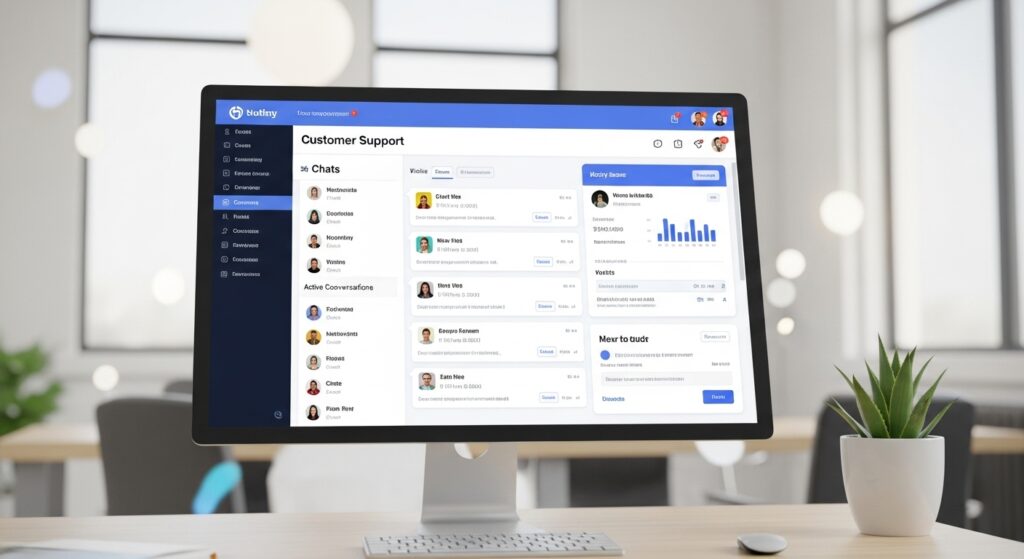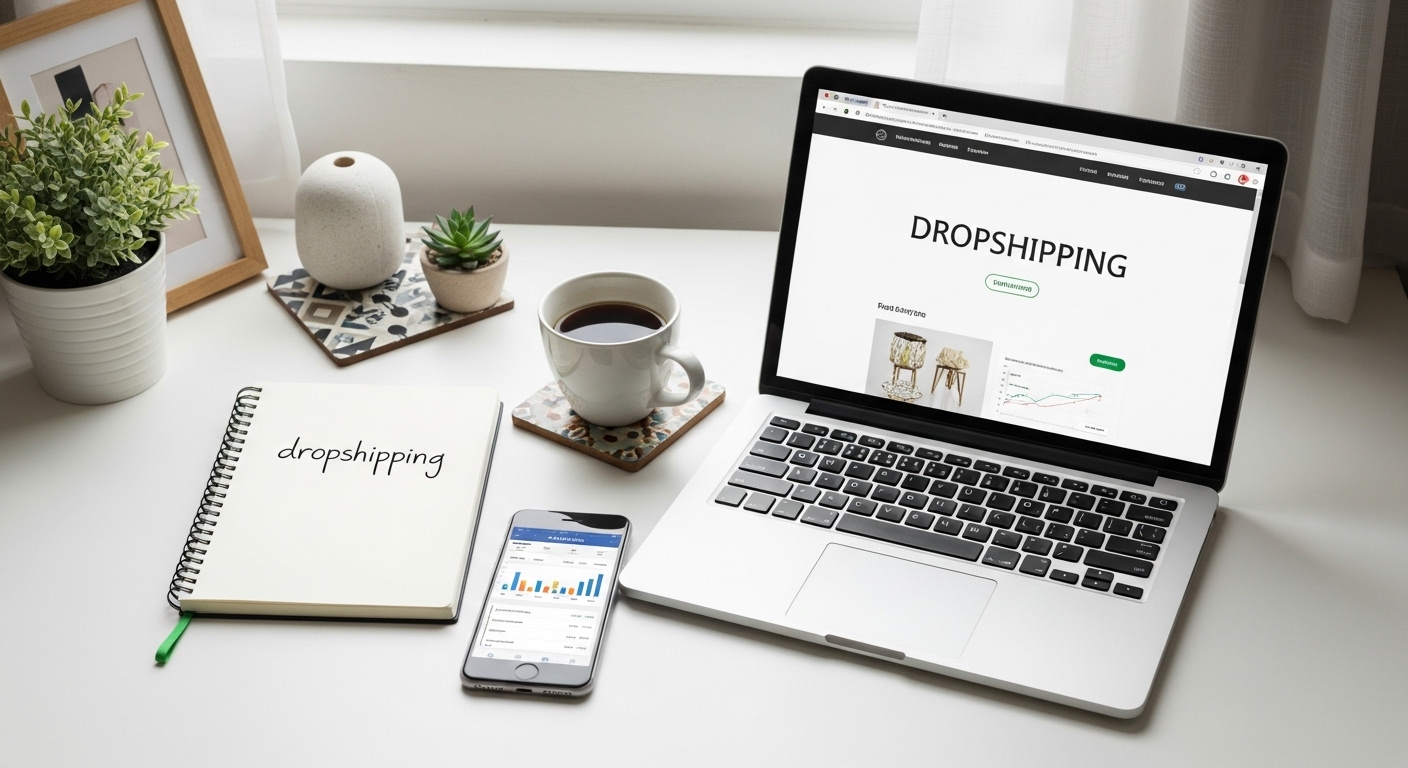Let’s be real—these days, everyone and their grandma’s dog is hustling online. Dropshipping? That’s become the golden ticket for broke dreamers who can’t cough up thousands for inventory or a fancy warehouse. The draw’s kinda obvious: you skip the whole “stack boxes in your garage” nightmare and just sell stuff you don’t even touch. Sounds easy, right? Well, sorta. It’s not all rainbows and easy money; you still gotta be sharp, know your way around the internet, and not give up the second things get tricky. So, yeah, if you’re eyeing dropshipping with a wallet that’s basically gasping for air, you’ll want a legit plan. Here’s the lowdown—a real-world roadmap, no fluff, just actionable steps and little nuggets of wisdom to get your scrappy business off the ground without going broke.

Understanding Dropshipping: A Low-Cost Business Model
Alright, here’s the real deal with dropshipping. You don’t actually stash any of the stuff you’re selling—no boxes in your garage, no awkward towers of unsold phone cases in your bedroom. What happens is, when someone orders from your site, you basically run over to your supplier (who’s probably chilling in a warehouse somewhere), and they ship it straight to your customer. You only cough up the cash for the item after you’ve already made the sale, which is pretty sweet for your wallet.
Now, don’t get too excited. Yeah, it cuts down your costs big time, but your profits? Not exactly swimming in gold coins here. Margins are kinda meh, and you’re basically at the mercy of your supplier for things like inventory and shipping speed. If they mess up, guess who gets yelled at? Spoiler: it’s you.
Really, you’re the middleman (or middlewoman, or middle-whatever). Pick products, set up your online shop, hustle at marketing, and make sure your customers aren’t yelling at you on Instagram. The risk’s low—like, you won’t lose your shirt if things flop—so it’s perfect if you wanna dip your toes into e-commerce without going full shark tank. Wanna experiment or learn the ropes? Dropshipping’s the playground.
Phase One: Strategic Niche Selection
Alright, first thing’s first: picking a niche that doesn’t suck. Seriously, if you get this wrong, you’re toast before you even launch. You want something folks actually care about, but not so many people care that you’re just another face in the crowd. Oh, and please, don’t pick something you hate—nothing worse than selling products you’d never touch yourself.
So, how do you find that magical sweet spot? Look, Google Trends is free—use it. Same goes for Keyword Planner or just scrolling through Amazon’s Best Seller pages. If you’re feeling nosy, snoop around on Reddit or Facebook groups. People love to complain online, and those complaints? Goldmines for underserved markets.
Here’s a pro-tip: skip the obvious stuff. Everyone and their grandma tries to sell phone cases and gym bands. It’s played out. Instead, get weird with your niche. Stuff like eco-friendly pet accessories, ultra-specific kitchen gadgets, or planners for neurodivergent folks. That’s where the magic happens.
And don’t just trust your gut—double-check if people are actually searching for this stuff. Free versions of SEMrush and Ahrefs work, or just peek at what’s buzzing on social media. If nobody’s talking about it? Maybe move on. If there’s a community begging for it? Jackpot.
Phase Two: Setting Up Your Online Store Affordably
Look, setting up a storefront these days? Doesn’t have to suck your bank account dry. You don’t need to be some code wizard either—thank God for e-comm platforms that basically hold your hand the whole way.
First thing, pick your poison. Shopify’s kinda the go-to for newbies, honestly. Super easy, plays nice with dropshipping stuff like Oberlo and DSers, and you won’t be tearing your hair out trying to figure out buttons. If you’re feeling brave (or cheap), WooCommerce on WordPress gets you more freedom to mess around, but yeah, you’ll probably Google a lot of “how do I…” questions.
Let’s talk cash—people always forget about the hidden costs:
- Shopify Basic: around $39 a month, but they’ll let you poke around for 3 days free. Not a lot, but hey, better than nothing.
- Domain name: about ten bucks a year. Namecheap, Google Domains—pick your flavor.
- Logo: Don’t pay for this. Canva or Looka will spit one out for free, and nobody cares that much anyway.
- Theme: Use Shopify’s free ones! “Dawn” is decent. Seriously, don’t get sucked into buying some fancy theme unless you’re allergic to money.
Design-wise? Chill out. Don’t go wild with five fonts and colors that look like a unicorn exploded. Keep it clean, make sure your product photos don’t look like they were taken on a potato, and write descriptions that actually make people want to buy. Oh, and for the love of all that’s holy, keep your branding consistent. No one trusts a store that looks like it was designed by three different people fighting over the mouse.
Phase Three: Finding Reliable Suppliers Without Upfront Costs
Man, your suppliers can totally make or wreck your whole operation. Cheap doesn’t automatically mean shady, but hey, you gotta do your homework—no cutting corners there.
- Stick with legit apps. Stuff like Oberlo (yep, for AliExpress), DSers, Spocket—these are like your secret weapon for finding solid, pre-vetted suppliers and scrolling through a ton of products without burning out.
- Actually talk to the suppliers. Don’t just lurk—shoot them questions about shipping, returns, tracking, the whole nine yards. Sometimes if you’re cool and build a little trust, they’ll hook you up with samples or even throw in a discount. Never hurts to ask.
- Don’t go nuts right out the gate. Seriously, uploading hundreds of products? Nah. Start with, like, 10 or 20 that you actually believe in. Way easier to keep tabs on quality and not lose your mind juggling orders.
Phase Four: Marketing on a Shoestring Budget
You don’t need to drop a small fortune on ads just to get people buying your stuff. Nope. What you really need? Some scrappy creativity, a dash of hustle, and actually knowing what your crowd cares about.

- Social Media—But Make It Real: Don’t just toss random posts on Insta, TikTok, or Pinterest and hope for magic. Pick your spot. Selling eco-friendly kitchen stuff? Show off your favorite zero-waste recipes, mess around with eco-hacks, repost customers’ pics—make it feel like an actual community, not a snooze-fest.
- Influencer Stuff (But Not the Kardashians): Forget mega-celebs. Those micro-influencers with a few thousand followers? Gold. They’ll hype your brand for free gear or a little affiliate cash, and honestly, their fans actually listen. Smaller crowd, bigger trust.
- Blog It Up: Old-school blogs still work, believe it or not. Write up something like “Top 5 Gadgets for a Greener Kitchen” and slip in your products like it’s no big deal. Ubersuggest or whatever SEO tool you like can help you find what people actually search for. No need to guess.
- Emails Aren’t Dead: Grab those emails with a pop-up (yeah, they’re annoying, but they work) or give away something cool—like a discount, a recipe, whatever. Use Mailchimp or Sender—both have free plans if you’re broke. Then, send out newsletters that don’t suck. Give people tips, behind-the-scenes stuff, maybe a meme or two. Don’t just beg them to buy.
That’s it. No billionaire budget required. Just some hustle and a bit of personality.
Phase Five: Handling Orders, Customer Service, and Returns Smartly

Look, you don’t need a massive budget to make your store’s customer service pop. Seriously.
- Automate the Boring Stuff: Grab tools like DSers or Oberlo—let them handle the grunt work like tracking and order fulfillment. No one wants to babysit spreadsheets all day.
- Don’t Sugarcoat It: Just be upfront—lay out shipping times, refund details, and how folks can actually reach you. People are way more chill about slow shipping if you keep it real from the jump.
- Returns? Deal With It: Most suppliers have your back on duds or no-shows, but you gotta know their rules. Spell it out for your customers so nobody’s left in the dark.
- Customer Support on a Budget: Check out free helpdesk stuff like Tawk.to or Freshdesk. Super easy ways to answer questions fast and keep people from ghosting your store.
Phase Six: Scaling the Business with Reinvested Profits
Alright, so you’ve actually made some sales—nice! Tempting as it is to just take the money and run (hey, we’ve all been there), you’ll get way further if you shove those profits right back into your business and let it snowball.
- Paid Ads: Yeah, Meta Ads, Google Shopping—those are your besties now. Don’t blow your wallet on day one, though. Toss in like five or ten bucks a day, mess around with different ads, and see what actually works. It’s basically trial and error, but with less crying.
- Upsell & Bundle Like a Boss: Don’t just sell one thing—sneak in some extras that make sense. Bundles, “people also bought,” the whole shebang. There are apps (like Frequently Bought Together) that’ll handle it for you, so you don’t have to manually hawk every add-on.
- Keep ‘Em Coming Back: Winning over new customers is cool, but getting them to come back? That’s money. Loyalty programs, discount codes for repeat buyers, whatever you gotta do. Returning customers are basically pure profit.
- Time to Get Fancy—Branding: Once you’re not totally winging it, think about slapping your own brand on those products. Private labeling sounds fancy, but it’s just putting your logo on stuff. People trust it more, you can charge more, and it’s way less generic. Boom—insta-glow-up for your shop.
Common Pitfalls and How to Avoid Them

- Everybody’s in some mad dash to “scale up” before their stuff even works—slow your roll. Iron out the kinks, run some tests, make sure you’re not about to light your money on fire with more ads or new products.
- Flying blind? Nah, track literally everything. Google Analytics, Shopify dashboards, those spicy customer reviews—if you’re not watching the numbers, you’re guessing. And guessing is for casinos, not business.
- Copy-paste merchants, you’re not fooling anyone. Sure, you can sell what’s hot, but why should anyone buy from you? Tell your story, build a weirdly memorable brand, or just solve a problem better than the next guy. Anything but being a clone.
- People forget: the customer experience isn’t just about shipping times. You might not control the trucks, but you can for sure send a fast reply or update someone before they even think to ask. That’s the kind of stuff people remember (and come back for).
Case Studies: Success Stories from Low-Investment Dropshippers
- Sarah’s basically the poster child for “just go for it”—she kicked things off with only a hundred bucks, whipped up a shop for ADHD-friendly planners, and then hit up TikTok like her life depended on it. Two months later? Boom. She’s got 2,000 followers and raked in $1,200 her very first month. Not bad for a college kid with a side hustle, huh?
- Then there’s Marcus—the dad who actually cares if the planet’s still around when his kid grows up. He dropped $250 to get some biodegradable lunchboxes out there. Instagram Reels, influencer moms, the whole nine yards. And, honestly, after like three months, his ads broke even, and he’d already wrangled 60 customers who kept coming back for more. Dude’s onto something.
- And Lila? She’s got that artsy, spiritual vibe going. She set up shop on Etsy, leaned on print-on-demand so she didn’t have to mess with inventory, and only shelled out cash for Etsy listings and a Canva Pro subscription. She didn’t bother with ads—just let good old-fashioned SEO do its thing, which, apparently, totally worked. Slow and steady, but reliable.
So, yeah, you don’t need to be Scrooge McDuck diving into a pile of cash to get something real off the ground. It’s all about being clever, sticking with it, and, honestly, just being yourself.
Watch this video if you still have doubts –
Conclusion
Oh, dropshipping with barely any cash? Totally doable these days. Honestly, if you’re scrappy and not afraid to dive into weird little niches, you can get something rolling for pocket change. There’s a million cheap tools out there, plus you can hustle with free marketing—social media, memes, whatever grabs attention. Just don’t kid yourself: you’re not gonna be sipping Mai Tais on a yacht in two weeks. It’s work. You’ll mess up, tweak stuff, probably want to throw your laptop once or twice. But if you treat it like an actual business (not just some side hustle you forget about), you might just snag some real wins—cash, a bit of freedom, and a crash course in how wild running an online biz can get.
Also Read – What Are the Most Effective Ways to Earn Money Online in 2025?



